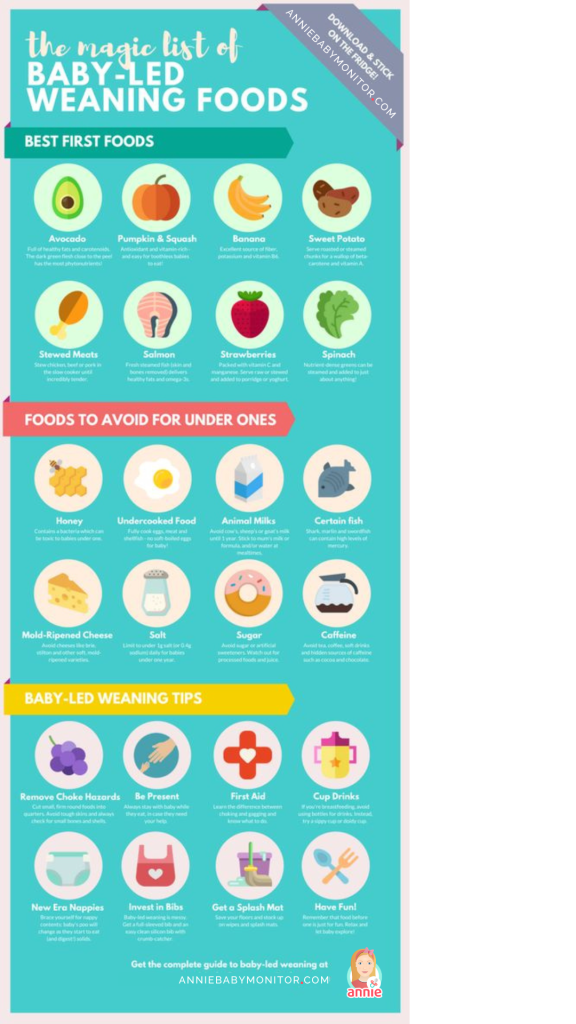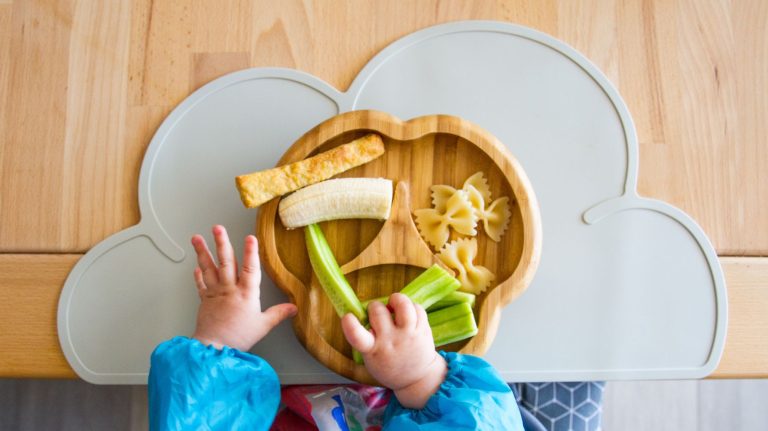
Ditch the Purees: Your Complete Baby Led Weaning Foods Guide (BLW)
- Created:
20. 8. 2024 - Updated:
21. 8. 2024
It’s a really exciting time as your little one starts getting into solid foods.
Baby-led weaning foods are a great way to get your baby trying out different tastes and textures, but it can feel pretty overwhelming to know where to start.
Let’s learn all about baby-led weaning foods and prepare for this journey!
What is Baby-Led Weaning (BLW)?
Baby-led weaning (BLW) is a way to start babies on solid foods. Unlike the traditional method of spoon-feeding pureed foods, BLW lets babies take the lead. The baby can touch, explore, and eat solid foods at their own pace. The key is giving babies control. Baby chooses what to eat and how much. BLW offers a variety of suitable foods, but babies decide what, how much, and how quickly to eat.
Benefits of Baby-Led Weaning
When you choose the baby-led weaning path, you’re setting your child up for many good things, both now and in the future.
It’s not just about introducing solid foods—it’s about helping your little one develop important skills and have valuable experiences.
All kids are different, but the perks of baby-led weaning really make it worth thinking about.
Some of these advantages include:
- helping your baby learn to feed themselves
- improving hand-eye coordination
- expanding taste palate
- reducing mealtime battles
- getting them to practice chewing early
- helping maintain a healthy weight
What age should I start baby led weaning?
So, when’s the best time to start Baby-Led Weaning (BLW)?
The American Academy of Pediatrics suggests starting at around 6 months of age.
But age isn’t the only factor to consider.
Here are some signs to watch out for:
- baby sit up independently
- baby has stopped pushing out food with their tongue
- baby is interested in the food you’re eating
- baby can pick up things with fingers
❗And don’t forget, starting BLW doesn’t mean you should stop breastfeeding or giving formula. Combining BLW with milk feeds is a balanced nutrition approach.
💡Also, introduce new foods one at a time to check for baby food allergies or reactions.
How to Start Baby Led Weaning
Starting out with baby-led weaning foods can be a roller-coaster of emotions—excitement, nerves, and everything in between. But don’t worry—you’re on the right track!
Here are some practical steps to ease you into this journey.
First, choose soft foods cut into manageable pieces. Think ripe bananas, avocados, or cooked sweet potatoes—they’re great starter foods because they’re soft and packed with good nutrition.
Make mealtime a social affair. Involve your baby in family meals and let them watch and imitate you. This helps them learn to feed themselves.
Let your baby get hands-on with the food, and don’t stress about the mess. It’s all about letting them explore and experience different tastes and textures.
Remember, this isn’t about how much they eat – it’s about the learning process. Your baby might take a while to get the hang of it. According to a study, a baby can take around 8-15 tries to accept new foods.
Best First Foods for Baby Led Weaning
Once you’ve nailed the basics of BLW, the next step is figuring out the best first foods for baby led weaning to start with. It’s all about making sure the foods have the right balance of nutrients, are cut into baby-friendly sizes and shapes, and have a soft texture.
High in Nutrition Foods
Start with foods loaded with iron and zinc, which are super important for your baby’s growth and development. You can go for mashed beans or lentils, finely chopped chicken or turkey, or mashed tofu. And don’t forget about whole grain products like pasta or bread— they’re also packed with essential nutrients.
Baby-Safe Sizes and Shapes
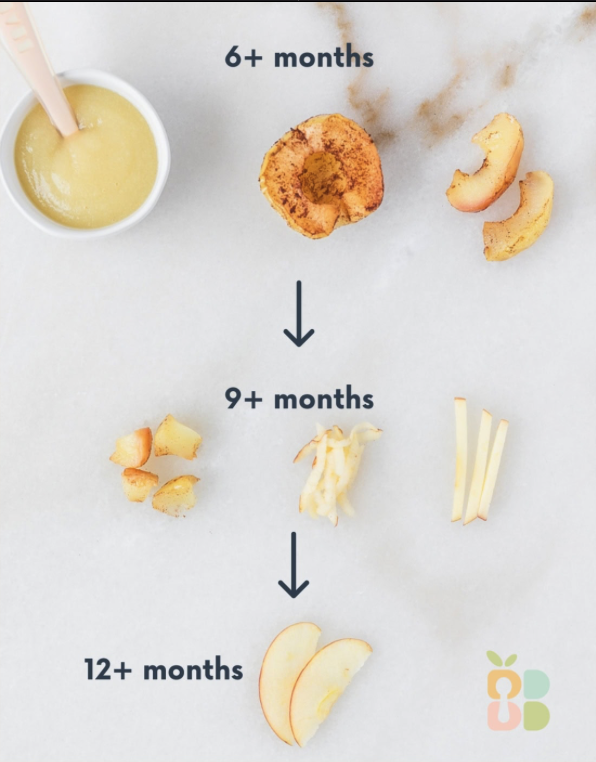
Next, when starting foods for baby led weaning, consider using foods that are safe for babies in size and shape. You want to make sure the food pieces are just the right size—not too big to choke on but not too small to be frustrating.
Good first foods are those that are easy for your baby to grab and explore, usually about twice the size of their fist.
Think finger-sized sweet potato sticks, broccoli with long stems, or banana quarters. These kinds of foods are easy for babies to grab and eat.
The shape of the food matters, too. Long slices are great for fruits and veggies, and thin strips work well for meat. Avoid round or coin-shaped pieces, which could be a choking hazard.
As your baby improves at self-feeding, you can gradually make the food pieces smaller. For example, if you start with apple slices the size of your finger, you can slowly make them the size of a green pea. This helps your baby develop fine motor skills and become more independent at mealtimes.
Soft Foods
Lastly, softer foods are easier for babies to handle and reduce the risk of choking. Babies don’t have solid jaws or teeth, so soft food is much safer.
You can check by poking it with a fork. We’re talking about foods that can be squished between your fingers—ripe fruits like peach, bananas or avocados; steamed veggies like carrots or broccoli; cooked pumpkin or sweet potatoes; soft, boneless fish pieces or soft cheese.
Remember, it’s really important to stick to these soft foods until your baby gets better at chewing.
📖 Learn more about what food to try baby and when.
Allergens
Keep an eye out for any signs of food allergies, such as hives, eczema, vomiting, diarrhoea, or difficulty breathing. Potential allergens, including nut butter, eggs, dairy, wheat, and soy, can be introduced cautiously. These foods, introduced one at a time and in small amounts, can help identify any adverse reactions.
📖 Learn more about baby food allergy, symptoms and treatment.
| Category | Examples |
|---|---|
| High in Nutrition Foods | Mashed beans or lentils, Finely chopped chicken or turkey, Mashed tofu, Whole grain bread or pasta |
| Baby-Safe Sizes and Shapes | Ripe bananas or avocados, Steamed carrots or broccoli, Soft boneless fish pieces |
| Soft Foods | Ripe peach, Cooked pumpkin or sweet potatoes, Soft cheese |
| Allergens (introduced cautiously) | Nut butter, Eggs, Dairy products, Wheat, Soy |
How to build a balanced plate for your baby
It’s a priority to ensure that your baby gets a balanced plate. A balanced diet implies the right amount of varied foods, which provides the necessary intake of essential vitamins and nutrients for healthy growth and development.
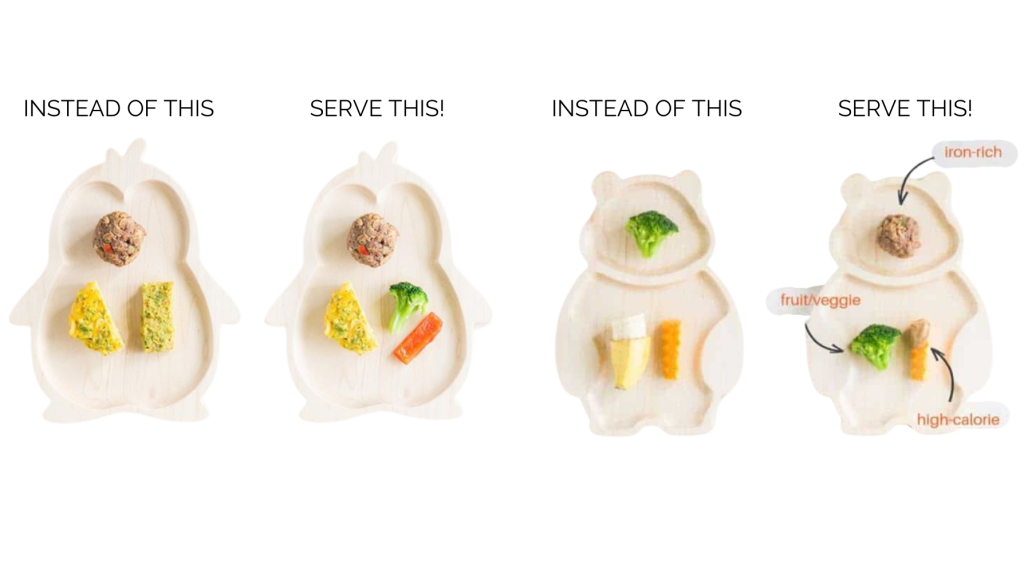
Essential Nutrients for a Balanced Meal
Your baby requires five essential nutrients for balanced meals: proteins, carbohydrates, fats, vitamins, and minerals.
- Proteins: Proteins support growth and development. Foods enriched with proteins include beans, chickpeas, lentils, and lean meats.
- Carbohydrates: Carbohydrates deliver energy. Prime sources are potatoes, bread, and pasta.
- Fats: Fats aid brain development. Avocados, whole milk yoghurt, and cheese brim with healthful fats.
- Vitamins and Minerals: Fruits, vegetables, lean meats, and whole grains are excellent sources of vitamins and minerals, which boost immunity and promote overall health.
Proportions for a Balanced Plate
When serving a meal, follow these proportions as a guide:
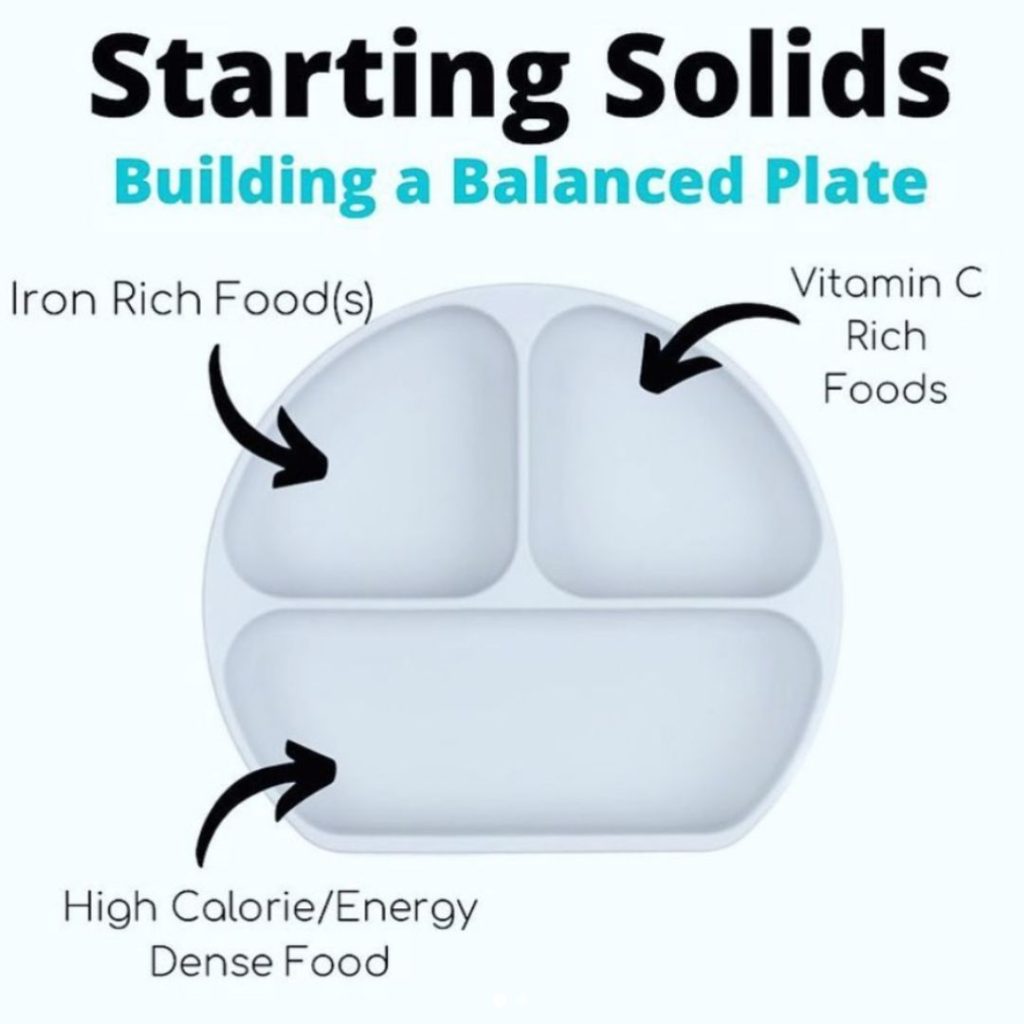
- Half Plate: Fruits and vegetables. Examples would include mashed bananas, roasted carrots, and pureed peas.
- One Quarter Plate: Proteins. An example might be diced chicken or beans.
- One Quarter Plate: Carbohydrates. It could be as simple as small pieces of cooked pasta or whole-grain bread.
Considerations for Balanced Meals
Keep in mind these key points when preparing balanced meals for your baby:
- Variety: Offer different foods to expose your baby to various tastes and textures.
- Security: Cut the food into baby-friendly sizes and check the softness to ensure the food is safe to eat.
- Control: Let your baby explore their food independently, reinforcing fine motor skills.
- Step-by-Step Approach: Introduce potential allergens gradually and keep a close eye on allergic reactions.
Baby Led Weaning Foods: Meal Ideas + Food Prep (single ingredient first foods recipes)
Check out these baby-led weaning meal ideas and BLW food prep tips for your little one’s first foods. I hope you find the prep tips for baby-led weaning food helpful!
- 🍌Banana For Babies – Baby Led Weaning Method
- 🥕 Carrots For Baby Led Weaning
- 🎃 Ways To Prepare Butternut Squash For Baby (BLW)
- 🍠 Sweet Potato Baby Led Weaning: Ways To Serve
- 🥦 Cauliflower For Baby Ways To Cook & Serve (BLW)
- 🥑 Avocado For Baby (BLW) Ways To Serve
- 🥔 Potatoes For Baby: How To Prepare & Serve (BLW)
- 🍈 Melon For Babies: Ways To Cut (BLW) Serve
- 🍅 First Beetroot For Babies: Ways To Cook, Serve & Recipes
Conclusion
When it comes to baby-led weaning (BLW), focus on offering soft, nutritious foods like avocado, banana, cooked potato, and steamed broccoli.
Remember to stay vigilant for any allergic reactions and choking hazards.
Hydration and meal frequency are just as crucial as food choices.
Keep mealtimes fun and let your baby explore different textures and flavours. Embrace the mess and enjoy this exciting growth stage with your little one!
